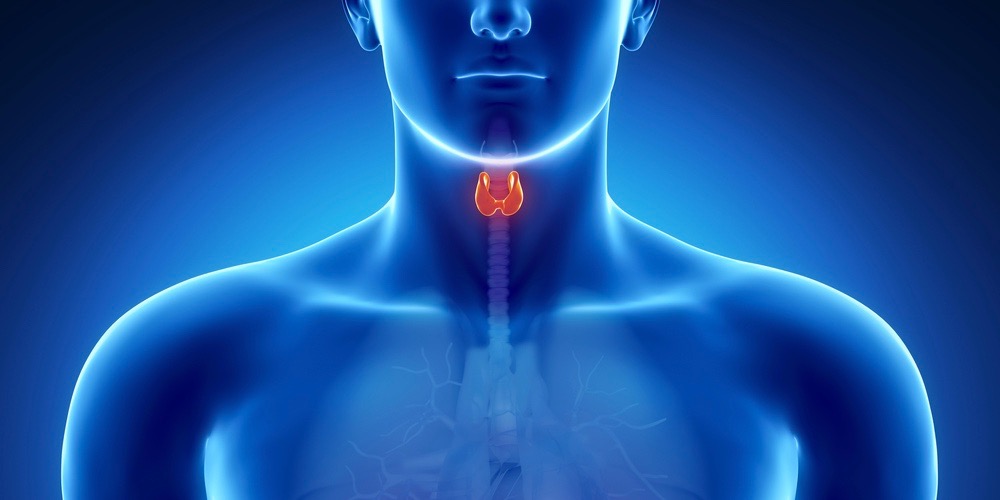ตามแผนการติดตาม ระดับของฮอร์โมนไทรอยด์จะได้รับการประเมินเป็นระยะเพื่อตรวจสอบการทำงานของต่อมไทรอยด์และประสิทธิภาพการรักษา ในหลายกรณี ระดับไทโรโกลบูลินที่สูงหลังการผ่าตัดหรือการปราบปราม TSH ถือว่าบ่งบอกถึงการกลับเป็นซ้ำ ไกลเกินกว่าการทดสอบเลือดต่อมไทรอยด์สำหรับการประเมินระดับฮอร์โมน การทดสอบ Thyroflex ถือเป็นแผนติดตามผลที่แม่นยำยิ่งขึ้นในการประเมินการทำงานของต่อมไทรอยด์
สรุปการเปิด
- Silent Thyroiditis เป็นโรคภูมิต้านตนเองของต่อมไทรอยด์ที่มีความเชื่อมโยงอย่างมากกับภาวะต่อมไทรอยด์ทำงานเกินชั่วคราว และสเปกตรัมของอาการที่สะท้อนถึงระยะและความรุนแรงของโรค
- Patients with this disorder experience a three-phase disease course of Hyperthyroidism, Normal thyroid functioning and Hypothyroidism. These phases can also occur in other thyroid dysfunctions, however, the presentation in Silent Thyroiditis is without thyroid pain or tenderness –a major differentiating factor from other autoimmune disorder of the thyroid
- Diagnostic findings show peak concentration levels of T4 and T3, with the concentration of TSH pegged at an all-time low. Blood tests also show an elevated level of thyroid peroxidase (TPO) and thyroglobulin antibodies. Some clinicians still use Thyroid blood in the assessment of thyroid functioning: a rather inaccurate method.
- The Thyroflex test provides an accurate picture of thyroid functioning by measuring the rate of impulse conduction through the muscles and nerves. This method is more accurate when compared to Thyroid Blood test that basically measures the thyroid hormones in the blood –Only 18% of these hormones are found in the blood.
- Silent Thyroiditis resolves overtime, however, supportive management plans can be initiated in some cases. Current management plans include the use of beta blockers, radioiodine therapy, anti-thyroid drugs and hormone replacement therapy.
การวินิจฉัยทำได้โดยใช้ Fine Needle Aspiration Biopsy พร้อมการประเมินอาการและการทดสอบการทำงานของต่อมไทรอยด์ การทดสอบ Thyroflex แสดงความแม่นยำ 97% ในการประเมินการทำงานของต่อมไทรอยด์อย่างแท้จริง การทดสอบนี้ประเมินการทำงานของเซลล์อย่างเป็นกลางโดยการวัดความเร็วของการนำกระแสประสาทผ่านเส้นประสาทและเซลล์กล้ามเนื้อ การนำเสนอทางคลินิกและภาพรวมของโรค
Silent Thyroiditis (Also, subacute lymphocytic thyroiditis or Painless Thyroiditis) is an autoimmune disorder of the Thyroid particularly characterized by a three-phase clinical course of simultaneous hyperthyroidism, hypothyroidism and euthyroid thyroid functioning –normal phase of thyroid functioning. Commonly diagnosed during post-partum period in adult women, this Thyroid dysfunction is closely related to Hashimoto’ thyroiditis, however, with a few distinctions in clinical presentation: there is a complete absence of thyroid tenderness, thyroid pain, lymphoid follicle and scarring, with and a decreased tendency for radioiodine uptake.
In addition to subacute postpartum thyroiditis and granulomatous thyroiditis, (De Quervain’s) Silent Thyroiditis is widely considered a major clinical cause of transient hyperthyroidism. In most patients, this form of thyroiditis is self-limiting –the triphasic clinical course run through a full progression within a short while and resolve sometimes without an aggressive drug therapy or hormone replacement therapy. In unexpected cases of disease complications, a protracted hyperthyroid phase might require the supervised use of beta blockers, likewise, a lifelong thyroxine supplementation might be needed in rare cases of permanent hypothyroidism.
Different medical reviews have revealed that the clinical phases experienced in patients with silent Thyroiditis varies in symptom presentation and time frame. On average, about 50% of these patients experience the hyperthyroid phase for an average period of 2 -12 months. The hypothyroid phase, when present, lasts for a relatively short period of about 3-4 months. When not present, the euthyroid phase follows closely and symptoms improves significantly. Documented research findings have reported an increased possibility of recurrent episodes of multicycle silent thyroiditis especially in pregnant patients.
The etiology (set of causes) of Silent Thyroiditis, though a subject of several clinical researches, remains unclear in its entirety. However, the most widely published postulate reveals a close connection with the pathophysiology of Hashimoto’s Thyroiditis. Thyroid biopsies in confirmed cases of the condition suggests lymphocytic infiltration devoid of lymphoid scarring. Lymphocytic infiltration of the thyroid initiates a cascade of biological steps ultimately leading to the destruction of thyroid follicles and the release of preformed triiodothyronine and thyroxine. Drug exposures with close relation to excess iodine and cytokine release have also been considered to play a significant role in the etiology of Silent Thyroiditis. Amiodarone, Interferon alfa, Lithium, and Interleukin 2 are the most implicated agents in drug-induced Silent Thyroiditis.
Clinical presentations earlier documented during the hyperthyroid phase in patients with a confirmed diagnosis of this condition include weight loss, palpitations, irregular menstrual cycle, extreme mood swings, increased appetite, nervousness, dyspnea (shortness of breath) , and irritability. Classical symptoms that defines an underactive thyroid follows immediately the Hyperthyroidism phase resolves. Fatigue and cold intolerance are the most noticeable symptoms of this stage. All symptoms of the Hypothyroid state resolves completely as the disease reaches the euthyroid state in which the thyroid fully recovers.
แนวทางการวินิจฉัยปัจจุบันและวิธีการรักษา
The most popular diagnosis approach for Silent Thyroiditis is a clinical evaluation of the levels of Serum thyroxine (T4), thyroid-stimulating hormone (TSH) and in some cases, triiodothyronine (T3). Laboratory findings show peak concentration levels of T4 and T3, with the concentration of TSH pegged at an all-time low. A review published by the Canadian Family Physician in 1984, detailing the clinical course and matching presentations in Silent Thyroiditis, reported a significantly increased levels of free T4 index and an increased T3 resin uptake. As a corroborating evidence for the differential diagnosis of Silent Thyroiditis, radioiodine uptake studies are conducted at separate phases of the clinical presentations. Thyroid Scintigraphy, currently used by some physicians, shows a reduced glandular activity coupled with decreased radioiodine uptake during the hyperthyroid state –depicting a progressive damage of the thyroid follicular cells.
There is an elevated level of thyroid peroxidase (TPO) and thyroglobulin (TG) antibodies, with an expected increase in the rate of urinary iodide excretion. Physicians are sometimes faced with a difficulty to correctly differentiate Silent Thyroiditis from subacute thyroiditis and Graves’ disease. In sharp contrast to clinical presentations in subacute thyroiditis, patients presenting with Silent Thyroiditis have a normal white blood cell count and erythrocyte sedimentation rate (ESR). Patients also present with no signs of thyroidal tenderness, pretibial myxedema (Graves) , opthalmoplegia (eye weakness) and exophthalmos (bulging eyes) –classical diagnostic signs of Graves’ disease.
Current Diagnosis approach with Reflex Evaluation Tests
Health assessment surveys have published various reports suggesting that an estimate of 80% of the population has a thyroid disorder, with a great percentage of this conditions remaining undiagnosed. This stat has prompted the need for a more accurate diagnosis method preferably non-invasive, sensitive and convenient in the management of thyroid disorders.
The tide of Thyroid disorder diagnosis has shifted to the modern method of combined evaluation of the Resting Metabolic rate, reflex testing and symptoms assessment. Thyroid blood tests are considered inconclusive and inefficient to determine the actual level of thyroid hormones which have a minor distribution rate in the blood.
With an emerging popularity, and a reported accuracy rate far beyond the controversial Thyroid blood test, this novel method directly tests the muscles, skin and neurotransmitters with a focus on reflexes.
Treatment Protocol for Silent Thyroiditis
The generally recommended treatment protocol for Silent Thyroiditis is based solely on the course of disease progression. In many cases, the triple course is transient in nature, resolving overtime with no significant health complications. Drug therapy treatment protocols are supportive and involves the use of beta blockers especially during the hypothyroid state. Unlike in other thyroid dysfunctions, the use of radioiodine therapy, anti-thyroid drugs and corrective surgery are usually neither required nor recommended.
The use of bioidentical hormone replacement therapy (BHRT) is fast emerging in the treatment of Silent Thyroiditis and other thyroid dysfunctions. Custom-compounded bioidentical hormones are administered systematically to correct thyroid hormone imbalance, resolving the primary thyroid disease faster than expected. Most importantly, in Silent Thyroiditis, bioidentical hormones significantly provide improve symptoms relief and the euthyroid state is reached faster.
The prognosis of Silent thyroiditis is improved with early accurate diagnosis and a properly planned therapy protocol. Thyroid function evaluation tests are performed at intervals to evaluate the effectiveness of choice therapy. In some patients, Integrative therapy methods might be needed to restore thyroid function perfectly.
ข้อมูลอ้างอิง
- www.ncbi.nlm.nih.gov/pubmed/3760800
- www.radiopaedia.org/articles/subacute-lymphocytic-thyroiditis
- www.msdmanual.com/profesional/endocrine-and-metabolic-disorders/thyroid-disorders/silent-lymphocytic-thyroiditis
- emedicine.medscape.com/article/125648-overview
- www.thyroflex.com


